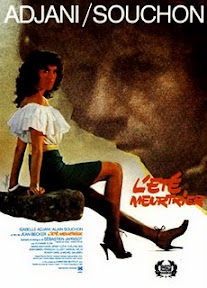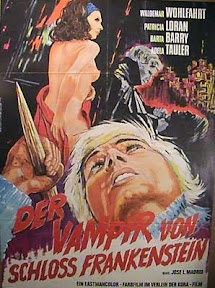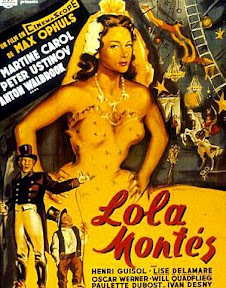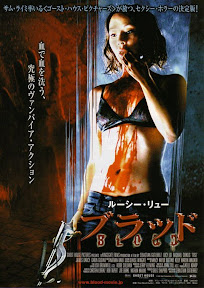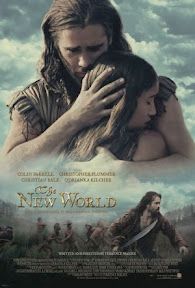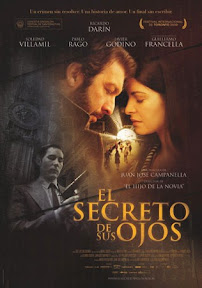 The Academy Award for Best Foreign Film has never been a reliable indicator of the actual best film made outside the Anglophone world in a given year. The nomination process, each country choosing one representative film and the Academy nominating five from the whole, inevitably excludes many worthy contenders. Sometimes the award is a consolation prize for a film also nominated for Best Picture (Life is Beautiful, Crouching Tiger Hidden Dragon). Much of the time having something to do with the Holocaust guarantees a victory. Sometimes the Academy makes an inspired choice. For 2006, for instance, I assumed that Pan's Labyrinth would win easily, and was shocked to see the Oscar go to The Lives of Others. Once I finally saw the latter film, however, I conceded that the better film, by a small margin, had won.
The Academy Award for Best Foreign Film has never been a reliable indicator of the actual best film made outside the Anglophone world in a given year. The nomination process, each country choosing one representative film and the Academy nominating five from the whole, inevitably excludes many worthy contenders. Sometimes the award is a consolation prize for a film also nominated for Best Picture (Life is Beautiful, Crouching Tiger Hidden Dragon). Much of the time having something to do with the Holocaust guarantees a victory. Sometimes the Academy makes an inspired choice. For 2006, for instance, I assumed that Pan's Labyrinth would win easily, and was shocked to see the Oscar go to The Lives of Others. Once I finally saw the latter film, however, I conceded that the better film, by a small margin, had won.I didn't see any of the 2009 foreign film nominees until the weekend before the Oscar telecast. The night before, I saw Michael Haneke's The White Ribbon and acquired a rooting interest in it. A few weeks later the French nominee, Un Prophete, came to town and impressed me nearly as much. By then, of course, I knew that both formidable films had been outvoted by an Argentine mystery directed by a veteran of American TV dramas. From the description, El Secreto de sus Ojos didn't seem in the same league as the other two movies. But remembering my experience with Lives of Others, I resolved to see it when it finally reached Albany.
The film is set in 1999, 25 years after the brutal rape and murder of a young woman. A retired detective, Benjamin Esposito (Ricardo Darin), is struggling to write a novel based on the case and the loose ends lingering after a quarter-century. One of those is his relationship with his superior, Irene Hastings (Soledad Villamil), now the district attorney. Another is the fact that the murderer was caught, had confessed, but was set free by a shady government which had black ops work for him. His whereabouts remain unknown as Esposito writes. He has a personal stake in the story because either the killer or his black-ops cronies murdered Esposito's partner, the lovable alcoholic Sandoval (Guillermo Francella).
Until the halfway point, there was little about El Secreto to distinguish it from the sort of TV fare director Juan Jose Campanella specializes in. There was some stylization at the start as we see scenes from Esposito's novel drafts, which we'll later see as scenes from his life, as if through filters, murkily. There's also some now-conventional non-linearity as the film switches back and forth from present to past and/or novel. But the story itself seemed like the stuff of television until it opened up in dramatic fashion. Sandoval has an insight on the murder suspect based on references in his letters: the man's a fan of a particular futbol team. This sets up an awesomely scaled CGI-assisted tracking shot that starts high above the city and descends into the bowl of the futbol stadium, swooping into the stands to identify Esposito and Sandoval in the middle of a massive crowd, searching for their suspect. Against all odds, they find him, setting off a spectacular foot chase, filmed mostly with hand-held cameras in long takes, with a semicomic detour into a men's room and a climax that takes the action onto the pitch in the middle of the game. It's at least the best cinematic use of a soccer stadium since Jafar Panahi's Offside and it brought the Argentine film to life for me.
Campanella follows up with a sequence that takes him back into TV territory, as Esposito and Hastings try to psyche the suspect into confessing. The opportunity here is to take the action to a level TV doesn't allow. Hastings plays the "bad cop" with reverse psychology, questioning his guilt by belittling his manhood, taunting him as a "pygmy" endowed with no more than a "peanut." You know you're not on TV anymore when the enraged suspect jumps up, unzips, and displays the total package to refute the prosecutor's claims before admitting his crime and punching her in the face. Javier Godino as the murderer nearly steals the movie in this single scene as he progresses from plausible protests of innocence to viciously defensive machismo under constant prodding.
For me, these scenes were the peak of the film. They seemed to point toward more sinister developments once the government springs Godino, but a scene in which he makes an intimidating display of a gun while sharing an elevator with our hero and heroine is practically his last appearance in the movie. He remains an implicit menace almost until the end, but his story resolves itself in a manner almost too Gothic to take seriously. But solving the mystery of what happened to the man gives Esposito a fresh chance to take the chance he couldn't bring himself to take back in the Seventies with Irene Hastings, who fortunately seems still willing after all those years.
This time around the Academy showed no special insight. El Secreto is not in the same league as White Ribbon or Un Prophete. It wasn't a bad film at all, but I ought to be able to say something better about a film now deemed the Best in its class. If you watch it you will most likely be entertained, but beyond that I can't make any claims for its greatness.
